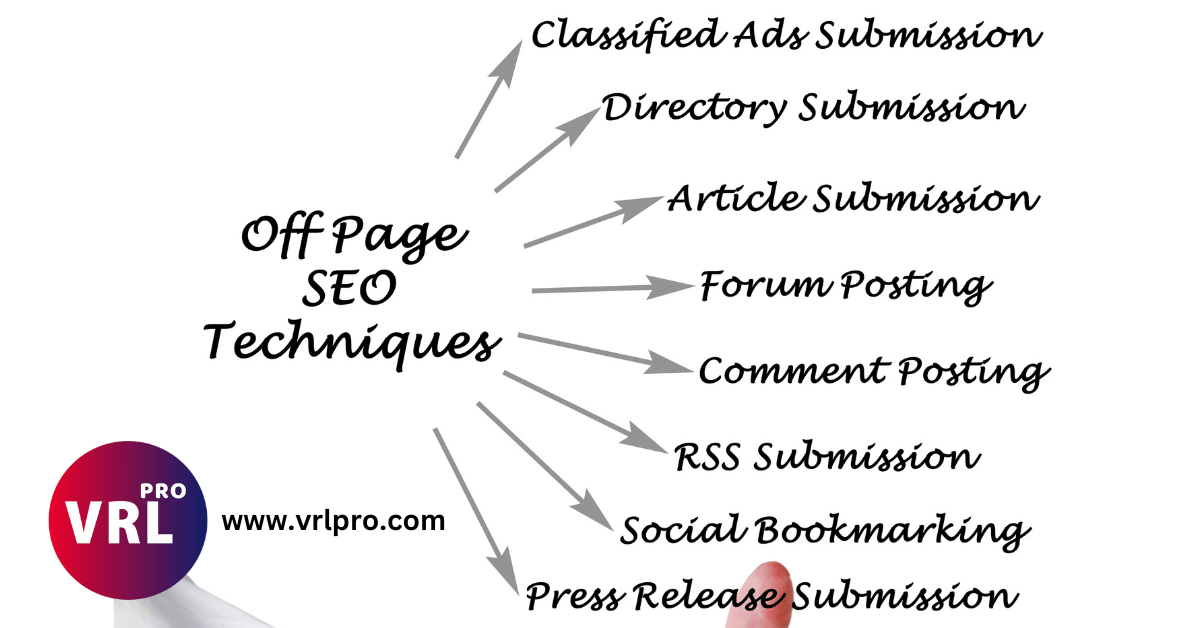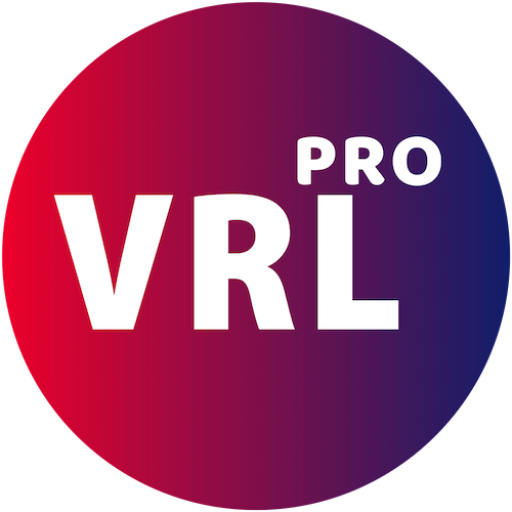[lwptoc]
Introduction:
Off Page SEO Techniques: Boosting Your Blog’s Visibility Beyond the Page
What is Off-Page SEO and Why is it Important?

When it comes to search engine optimization (SEO), most people think of on-page elements like keyword optimization and meta tags. However, there’s another crucial aspect that can significantly impact your website’s visibility: off-page SEO.
Off page SEO refers to all the activities you undertake outside your website to improve its search engine rankings. It involves building your website’s reputation, authority, and credibility through various techniques that are not directly controlled by you.
While on-page SEO focuses on optimizing your website’s content and structure, off-page SEO takes into account external factors that influence your website’s ranking. These factors include backlinks, social signals, brand mentions, and more.
The Benefits of Off Page SEO Techniques for Your Blog
Implementing off-page SEO techniques can bring several benefits to your blog. Here are a few reasons why you should pay attention to off-page optimization:
1. Improved Search Engine Rankings
Off-page SEO plays a significant role in determining your website’s position in search engine results pages (SERPs). By building high-quality backlinks and establishing a strong online presence, you can increase your blog’s visibility and attract more organic traffic.
2. Increased Website Authority
Off-page SEO helps build your website’s authority and credibility in the eyes of search engines. When reputable websites link back to your blog or mention your brand, it signals to search engines that your content is valuable and trustworthy. This can lead to higher rankings and increased trust from your audience.
3. Enhanced Brand Awareness
Off-page SEO techniques, such as social media marketing and influencer collaborations, can help you reach a wider audience and increase brand awareness. By engaging with your target audience on various platforms, you can build a strong online presence and establish your blog as an authoritative source in your niche.
4. Increased Referral Traffic
Off-page SEO is not just about improving your search engine rankings; it also helps drive referral traffic to your blog. When other websites link to your content, it creates opportunities for new visitors to discover your blog and explore your valuable insights. This can result in increased engagement, conversions, and ultimately, revenue.
Types of Off Page SEO Techniques

Off-page SEO techniques can be broadly categorized into two types: link-based and non-link-based techniques. Let’s explore each of them briefly:
1. Link-Based Techniques
Link-based off-page SEO techniques focus on building high-quality backlinks to your blog. These techniques include:
- Guest blogging: Writing and publishing articles on other reputable blogs in your niche, with a link back to your website.
- Social bookmarking: Sharing your blog posts on social bookmarking platforms like Reddit, Digg, and StumbleUpon to increase visibility and generate backlinks.
- Link-building outreach: Reaching out to other website owners or bloggers to request backlinks or collaborations.
2. Non-Link-Based Techniques
Non-link-based off-page SEO techniques focus on building your brand’s online presence and reputation. These techniques include:
- Social media marketing: Engaging with your audience on social media platforms like Facebook, Twitter, and Instagram to promote your blog and build brand awareness.
- Online reputation management: Monitoring and managing your brand’s online reputation through reviews, testimonials, and customer feedback.
- Influencer marketing: Collaborating with influencers in your industry to promote your blog and reach a wider audience.
By implementing a combination of link-based and non-link-based off-page SEO techniques, you can enhance your blog’s visibility, authority, and credibility in the online world. Remember, off-page SEO is an ongoing process that requires consistent effort and strategic planning. So, start exploring these techniques and watch your blog soar to new heights!
Core Techniques: Link Building for High-Quality Backlinks

Link building is a crucial aspect of any successful SEO strategy. When it comes to improving your website’s visibility and ranking on search engine results pages (SERPs), high-quality backlinks play a significant role. In this article, we will discuss the importance of high-quality backlinks and explore various link-building strategies that can help you achieve your goals.
The Power of High-Quality Backlinks
Backlinks, also known as inbound links, are links from other websites that direct users to your site. Search engines consider backlinks as votes of confidence, indicating that your website is trustworthy and relevant. However, not all backlinks are created equal. Quality matters more than quantity.
High-quality backlinks come from reputable and authoritative websites in your industry. These backlinks carry more weight in search engine algorithms, boosting your website’s credibility and improving your chances of ranking higher on SERPs.
Effective Link-Building Strategies
Now that we understand the importance of high-quality backlinks, let’s explore some effective link-building strategies:
1. Guest Blogging
Guest blogging involves writing and publishing articles on other websites in your niche. By contributing valuable content to authoritative sites, you can earn backlinks to your own website. This strategy helps you tap into the existing audience of the host website, increasing your brand exposure and driving traffic to your site.
2. Broken Link Building
Broken link building is a technique that involves finding broken links on other websites and offering your own content as a replacement. It’s a win-win situation for both parties involved. The website owner gets a functional link, and you earn a valuable backlink. However, it requires thorough research and careful outreach to be successful.
3. Influencer Outreach
Influencer outreach involves reaching out to influential individuals in your industry and building relationships with them. By collaborating with influencers, you can gain exposure to their audience and potentially earn backlinks from their websites. Remember to approach influencers with genuine intentions and offer them something of value in return.
4. Link Directories (with Caution)
Link directories can be a useful tool for building backlinks, but it’s important to approach them with caution. Choose reputable directories that are relevant to your industry and avoid spammy directories that exist solely for link-building purposes. Focus on quality over quantity when submitting your website to directories.
5. Creating Valuable Resources
One of the most effective ways to attract high-quality backlinks is by creating valuable resources such as infographics, ebooks, or comprehensive guides. These resources provide valuable information to users and are more likely to be shared and linked to by other websites. Invest time and effort into creating content that stands out and offers unique insights.
Building Links Naturally and Avoiding Black-Hat Techniques

While it’s important to actively build backlinks, it’s equally crucial to do it in a natural and ethical way. Search engines are constantly evolving to identify and penalize websites that engage in black-hat link-building techniques, such as buying links or participating in link schemes.
Instead, focus on building relationships, creating valuable content, and offering something of value to your target audience. By doing so, you will naturally attract high-quality backlinks from reputable sources, which will have a long-lasting positive impact on your website’s SEO performance.
In conclusion, high-quality backlinks are essential for improving your website’s visibility and ranking on SERPs. By implementing effective link-building strategies, such as guest blogging, broken link building, influencer outreach, link directories (with caution), and creating valuable resources, you can earn valuable backlinks from reputable websites. Remember to prioritize natural and ethical link-building practices to ensure long-term success.
The Power of High-Quality, Shareable Content in Content Marketing
In the world of content marketing, creating high-quality, shareable content is the key to attracting links and brand mentions. When done right, this strategy can significantly boost your online presence and drive traffic to your website. In this blog post, we will explore the importance of high-quality content and discuss different content formats that can help you achieve your marketing goals. Why is high-quality, shareable content important? Well, it all comes down to the power of backlinks and brand mentions. When other websites link to your content, it signals to search engines that your website is trustworthy and authoritative. This, in turn, can improve your search engine rankings and increase your organic traffic. Brand mentions, on the other hand, help to build brand awareness and credibility, as they indicate that your content is valuable and worth referencing. So, how can you create high-quality, shareable content that attracts links and brand mentions? Let’s explore some popular content formats that have proven to be effective:
- 1. Blog Posts: Blogging is a versatile and widely used content format that allows you to share your expertise, insights, and opinions with your audience. By providing valuable and informative content, you can establish yourself as a thought leader in your industry and attract links from other websites.
- 2. Infographics: Infographics are visually appealing and easy-to-digest pieces of content that present complex information in a visually appealing way. They are highly shareable and can attract links from websites that find your infographic valuable and relevant to their audience.
- 3. Videos: Videos have become increasingly popular in content marketing. They allow you to engage with your audience on a more personal level and provide a dynamic and interactive experience. Videos can be shared across various platforms, including social media, and are more likely to be linked to and mentioned by other websites.
- 4. Case Studies: Case studies provide real-life examples of how your products or services have helped your customers solve their problems or achieve their goals. They are highly valuable and can attract links from websites that want to reference your success stories.
- 5. Podcasts: Podcasts have gained immense popularity in recent years. They offer a convenient way for people to consume content while on the go. By hosting a podcast and providing valuable insights and interviews, you can attract links and brand mentions from other podcasts and relevant websites.
- Now that we’ve discussed different content formats, let’s share some tips for creating engaging and informative content:
- 1. Know your audience: Understand who your target audience is and what they are interested in. Tailor your content to their needs and preferences to ensure maximum engagement and shareability.
- 2. Provide value: Your content should offer something valuable to your audience. Whether it’s practical tips, industry insights, or entertaining stories, make sure your content is informative and relevant.
- 3. Be original: Create unique and original content that stands out from the crowd. Avoid regurgitating information that can be found elsewhere. Instead, provide a fresh perspective or unique insights.
- 4. Use visuals: Incorporate visuals, such as images, graphs, and charts, to enhance the visual appeal of your content. Visuals not only make your content more engaging but also increase its shareability.
- 5. Promote your content: Don’t just create great content and hope for the best. Actively promote your content through social media, email marketing, and other channels to increase its visibility and attract links and brand mentions. In conclusion, creating high-quality, shareable content is a powerful strategy in content marketing.
- By leveraging different content formats and following the tips mentioned above, you can attract links and brand mentions, enhance your online presence, and drive traffic to your website. So, get creative, provide value, and watch your content soar to new heights.
Social Media Marketing:
Social media has revolutionized the way businesses connect with their audiences, providing powerful platforms for content promotion and brand awareness. In today’s digital age, leveraging social media marketing has become an essential component of any successful marketing strategy. This article explores how social media can be effectively used to promote your content and build brand awareness. We will delve into different social media platforms, discussing their unique strengths and strategies for maximizing their potential. By the end, you will have a deeper understanding of the key principles and practices behind utilizing social media to enhance your brand presence and engage with your target audience.
1. Introduction to social media marketing
Understanding the basics of social media marketing
Social media has become an integral part of our daily lives, and it’s no surprise that businesses have hopped on the bandwagon to promote their products and services. Social media marketing involves using platforms like Facebook, Instagram, and Twitter to connect with your target audience, increase brand visibility, and drive traffic to your website.
The importance of social media in content promotion and brand building
Gone are the days when you could rely solely on traditional marketing methods. Social media provides a cost-effective way to share your content with a wide audience and build brand awareness. By leveraging the power of social media, you can reach potential customers, engage with your existing audience, and establish a strong brand presence.
2. Leveraging social media platforms for content promotion
Selecting the right social media platforms for your target audience
Not all social media platforms are created equal, and it’s important to choose the ones that align with your target audience. For example, if your brand targets a younger demographic, platforms like TikTok and Snapchat may be more effective, while LinkedIn might be better for B2B businesses. Understanding your audience’s preferences and behaviors is key to selecting the right platforms for content promotion.
Optimizing content for social media sharing and engagement
When it comes to social media, attention spans are short, so it’s crucial to optimize your content for quick consumption. Use eye-catching visuals, concise captions, and clear calls-to-action to encourage engagement. Don’t be afraid to experiment and get creative with your content to stand out from the crowd.
3. Building brand awareness through social media
Creating a strong brand identity on social media
Social media offers the perfect platform to showcase your brand’s personality and values. Use consistent branding elements, such as logos, colors, and tone of voice, to create a cohesive brand identity. Engage with your audience by responding to comments and messages, and humanize your brand by sharing relatable and behind-the-scenes content.
Utilizing social media to amplify brand messaging
Social media allows you to amplify your brand messaging and reach a wider audience. Share valuable and informative content that aligns with your brand’s values and expertise. Encourage your audience to share your content and engage with it through likes, comments, and shares. By harnessing the power of social networks, you can extend the reach of your brand message and connect with potential customers.
4. Understanding the role of different social media platforms
An overview of popular social media platforms
There is a plethora of social media platforms available, each with its own unique features and user base. Platforms like Facebook, Instagram, Twitter, LinkedIn, YouTube, and TikTok dominate the social media landscape. It’s essential to understand the strengths and characteristics of each platform to determine which ones are most suitable for your business objectives.
Identifying platform-specific strengths and limitations
Each social media platform has its strengths and limitations, and understanding them will help you make informed decisions about where to focus your efforts. For example, Instagram is great for visual storytelling and engaging with a younger audience, while LinkedIn excels in professional networking and B2B marketing. Consider factors like target demographics, content formats, and engagement patterns to maximize the benefits of each platform. Remember, experimentation is key to finding what works best for your brand.
So, get ready to unleash the power of social media marketing, connect with your audience, and build a strong brand presence that leaves a lasting impression. And remember, don’t take yourself too seriously – social media is all about having fun and connecting with people in an authentic way. Happy posting!
5. Strategies for effective content promotion on social media
When it comes to promoting your content on social media, it’s important to have a plan in place. Creating a content promotion plan will help you stay organized and ensure that you are utilizing social media effectively. Start by identifying your target audience and determining which social media platforms they are most active on. This will allow you to focus your efforts and avoid wasting time on platforms that don’t align with your goals.
Once you’ve identified the platforms you want to target, it’s time to create a content calendar. This will help you stay consistent and ensure that you are regularly sharing valuable content with your audience. Be sure to mix up your content by including a variety of formats such as articles, videos, and graphics. This will help keep your audience engaged and interested in what you have to say.
Engaging with social media influencers
One effective strategy for promoting your content on social media is to engage with influencers in your niche. Influencers have built up a loyal following and can help amplify your content to a wider audience. Start by researching influencers who align with your brand values and have an audience that matches your target demographic. Once you’ve identified potential influencers, reach out to them and propose a collaboration or partnership.
When engaging with influencers, it’s important to be genuine and build a relationship first. Don’t just reach out and ask for a favor. Instead, show interest in their work, share their content, and engage with their audience. This will help establish trust and increase the likelihood of them promoting your content to their followers.
6. Tools and techniques for measuring social media marketing success
Measuring the success of your social media marketing efforts is crucial in order to understand what’s working and what needs improvement. There are several tools and techniques you can use to measure your social media marketing success.
Analyzing social media metrics and insights
Most social media platforms offer built-in analytics tools that provide valuable insights into the performance of your content. These metrics can include impressions, reach, engagement, clicks, and more. By analyzing these metrics, you can determine which types of content perform best and adjust your strategy accordingly.
Utilizing social media management and tracking tools
In addition to the built-in analytics tools, there are also third-party social media management and tracking tools available. These tools can help you schedule and post content, track engagement, and monitor mentions of your brand. Some popular options include Hootsuite, Sprout Social, and Buffer.
7. Case studies and examples of successful social media marketing campaigns

Examining successful brand campaigns on different social media platforms can provide valuable insights and inspiration for your own content promotion strategies. Take the time to research and analyze successful campaigns in your industry or niche. Look at the key elements that made these campaigns successful, such as the use of compelling visuals, engaging storytelling, and strategic targeting.
In addition to studying larger brand campaigns, it can also be helpful to learn from real-life examples of effective content promotion strategies. Look for smaller businesses or individuals who have successfully used social media to build their brand and promote their content. These examples can provide practical tips and ideas that you can implement in your own social media marketing efforts.
8. Conclusion and key takeaways for utilizing social media in content promotion and brand building
In conclusion, social media has become an indispensable tool for businesses to promote their content and build brand awareness. By understanding the basics of social media marketing, selecting the right platforms, and implementing effective strategies, you can tap into the vast potential of social media to reach and engage with your target audience. Remember to monitor and measure your efforts using tools and techniques to ensure continuous improvement. By leveraging social media, you can create a strong brand presence, drive content promotion, and ultimately achieve your marketing objectives. Embrace the power of social media and unlock new opportunities for your business in the digital world.
A Guide to Different Social Media Platforms and Their Unique Strengths

In today’s digital age, social media has become an integral part of our daily lives. From connecting with friends and family to staying updated with the latest news and trends, social media platforms have revolutionized the way we communicate and share information. With a plethora of options available, it can be overwhelming to choose the right platform for your needs. In this article, we will explore some of the most popular social media platforms and their unique strengths.
1. Facebook: Facebook is the granddaddy of all social media platforms, boasting over 2.8 billion monthly active users. It offers a wide range of features, making it suitable for individuals, businesses, and organizations. With its powerful targeting options, Facebook is an excellent platform for running targeted advertising campaigns. It also provides robust analytics tools, allowing businesses to measure the success of their marketing efforts. Additionally, Facebook groups provide a space for like-minded individuals to connect and share their interests.
2. Instagram: If a picture is worth a thousand words, then Instagram is the place to be. This visually-driven platform is all about sharing photos and videos. With over 1 billion monthly active users, Instagram is a powerful tool for businesses and influencers to showcase their products, services, and lifestyles. The platform’s emphasis on aesthetics and visual storytelling makes it ideal for creative industries such as fashion, food, and travel. Instagram also offers features like Instagram Stories and IGTV, allowing users to engage with their audience in a more authentic and interactive way.
3. Twitter: Known for its real-time updates and concise messaging, Twitter is a platform where news breaks and conversations happen. With its character limit of 280, Twitter encourages users to express their thoughts and opinions concisely. It is an excellent platform for individuals, journalists, and brands to share news, engage in conversations, and stay updated with the latest trends. Hashtags play a significant role on Twitter, making it easy to discover and join conversations around specific topics.
4. LinkedIn: LinkedIn is the go-to platform for professionals and businesses looking to network and build their brand. With over 740 million members, LinkedIn offers a range of features tailored for career development and business growth. Users can showcase their skills and experience, connect with industry peers, and discover job opportunities. For businesses, LinkedIn provides a platform for recruitment, lead generation, and thought leadership through publishing articles and engaging in industry-specific groups.
5. YouTube: As the second-largest search engine after Google, YouTube is a powerhouse for video content. With over 2 billion logged-in monthly users, the platform offers endless opportunities for creators, businesses, and marketers. YouTube’s algorithm-driven recommendations make it easy for users to discover new content, while creators can monetize their videos through ads and sponsorships. Whether you’re looking for tutorials, entertainment, or educational content, YouTube has it all.
6. Pinterest: If you’re in the market for inspiration and ideas, Pinterest is the platform for you. With its visual bookmarking system, Pinterest allows users to discover and save ideas for various topics, including home decor, fashion, recipes, and more. With over 400 million monthly active users, Pinterest is a valuable platform for businesses in industries such as fashion, home decor, and DIY. By creating visually appealing pins and utilizing keywords effectively, businesses can drive traffic to their websites and increase brand visibility.
Each social media platform offers its own unique strengths and caters to different audiences and objectives. It’s essential to understand these strengths and align them with your goals to make the most out of your social media presence. Whether you’re looking to connect with friends, promote your business, or stay updated with the latest trends, there’s a social media platform out there that’s perfect for you. So go ahead, explore, and make your mark in the digital world!
Tips for Creating Engaging Social Media Content and Interacting with Your Audience
Social media has become an integral part of our lives, connecting us with friends, family, and even businesses. As a business owner or marketer, it’s crucial to harness the power of social media to engage with your audience and build a strong online presence. In this blog post, we will share some valuable tips on creating engaging social media content and interacting with your audience.
1. Know Your Audience
Before you start creating content, it’s essential to understand who your target audience is. Take the time to research and analyze your audience’s demographics, interests, and preferences. This knowledge will help you tailor your content to their needs and interests, making it more engaging and relevant.
2. Be Authentic
Authenticity is key when it comes to social media. People want to connect with real individuals and businesses, not faceless corporations. Show your personality, be transparent, and let your brand’s unique voice shine through your content. This will help you build trust and create a genuine connection with your audience.
3. Use Visuals
In the fast-paced world of social media, visuals play a crucial role in capturing attention and engaging your audience. Incorporate eye-catching images, videos, infographics, and other visual elements into your content. Visuals not only make your posts more appealing but also help convey your message more effectively.
4. Tell Stories
Humans are natural storytellers and are drawn to narratives. Use storytelling techniques to create compelling content that resonates with your audience. Share personal experiences, customer success stories, or behind-the-scenes glimpses of your business. Stories have the power to evoke emotions and create a deeper connection with your audience.
5. Encourage Interaction
Social media is all about fostering conversations and building relationships. Encourage your audience to engage with your content by asking questions, seeking opinions, or running polls and surveys. Respond to comments, messages, and mentions promptly, showing that you value their input and are actively listening.
6. Provide Value
One of the best ways to engage your audience is by providing them with valuable content. Share educational articles, how-to guides, tips, and industry insights that are relevant to your audience’s interests. By offering valuable information, you position yourself as an authority in your niche and build trust with your audience.
7. Be Consistent
Consistency is key to maintaining a strong social media presence. Create a content calendar and stick to a regular posting schedule. This not only helps you stay organized but also ensures that your audience knows when to expect new content from you. Consistency builds trust and keeps your audience engaged and interested in what you have to say.
8. Monitor and Analyze
Keep a close eye on your social media metrics and analyze the performance of your content. Pay attention to engagement rates, reach, clicks, and conversions. This data will help you understand what type of content resonates best with your audience and make informed decisions to optimize your social media strategy.
9. Stay Up-to-Date
Social media platforms are constantly evolving, with new features and trends emerging regularly. Stay up-to-date with the latest developments and adapt your content strategy accordingly. Experiment with new formats, such as live videos, stories, or interactive posts, to keep your audience engaged and interested.
10. Have Fun
Social media should be enjoyable for both you and your audience. Don’t be afraid to inject some humor, creativity, or personality into your content. Have fun with your posts, engage in lighthearted conversations, and show the human side of your brand. Remember, social media is a place to connect and build relationships.
Creating engaging social media content and interacting with your audience requires time, effort, and a deep understanding of your target audience. By following these tips, you can create a vibrant social media presence that captivates your audience and drives meaningful interactions.
The Power of Local SEO for Brick-and-Mortar Businesses
When it comes to running a brick-and-mortar business or targeting a specific location, local SEO is an absolute game-changer. In today’s digital age, where online presence is crucial, optimizing your local SEO can make a significant impact on your business’s visibility and success. In this article, we’ll delve into the importance of local SEO and discuss effective strategies to maximize its potential.
Claiming and Optimizing your Google My Business Listing
One of the first steps in enhancing your local SEO is by claiming and optimizing your Google My Business (GMB) listing. GMB is a powerful tool that allows you to manage how your business appears on Google Search and Maps. By claiming your listing, you ensure that accurate and up-to-date information about your business is readily available to potential customers.
Optimizing your GMB listing involves providing detailed information about your business, such as your address, phone number, website, and business hours. It’s essential to ensure that this information is consistent across all online platforms. Additionally, including relevant keywords in your business description can help improve your local search rankings.
Building Local Citations
Local citations play a vital role in local SEO. A citation is any online mention of your business’s name, address, and phone number (NAP). These citations can be found in various online directories, review sites, and social media platforms. Building a strong network of local citations helps search engines validate your business’s existence and credibility.
Start by listing your business in popular directories such as Yelp, Yellow Pages, and Bing Places. Ensure that your NAP information is consistent across all citations. Additionally, seek out niche-specific directories and local business associations that are relevant to your industry. These citations not only boost your local SEO but also increase your chances of being discovered by potential customers within your target location.
Online Reviews
Online reviews have become a crucial factor in local SEO. Positive reviews not only enhance your business’s reputation but also improve your search engine rankings. Encourage your satisfied customers to leave reviews on platforms like Google, Yelp, and Facebook. Responding to both positive and negative reviews shows that you value customer feedback and are actively engaged in providing excellent service.
Remember, though, that fake reviews can harm your business’s credibility. It’s important to earn genuine reviews through exceptional customer experiences rather than resorting to unethical practices. Engage with your customers, address their concerns, and show that you genuinely care about their satisfaction.
Community Engagement
Engaging with your local community is not only beneficial for your business’s reputation but also for your local SEO efforts. Participate in local events, sponsor community initiatives, and collaborate with other businesses in your area. By being an active member of your community, you increase your chances of being mentioned and linked to by other local businesses and organizations.
Furthermore, engaging with your community through social media platforms can significantly impact your local SEO. Share relevant and valuable content, respond to comments and messages promptly, and encourage local discussions. This not only boosts your online presence but also helps build a loyal customer base.
In conclusion, local SEO is a powerful tool for brick-and-mortar businesses or those targeting a specific location. By claiming and optimizing your GMB listing, building local citations, managing online reviews, and engaging with your community, you can significantly enhance your business’s visibility and attract more customers within your target area. Embrace the power of local SEO and watch your business thrive in the digital landscape.
Advanced Techniques:
The Power of Public Relations: Building Trust and Reputation
Public relations is a vital component of any successful business or organization. It plays a crucial role in shaping public perception, building trust, and maintaining a positive reputation. In today’s fast-paced and interconnected world, the importance of effective public relations cannot be overstated.
What is Public Relations?
Public relations, often referred to as PR, is the strategic management of communication between an organization and its target audience. It involves creating and maintaining a favorable image and reputation through various channels, such as media relations, community engagement, and crisis management.
At its core, public relations is about building relationships and fostering goodwill. It is not just about promoting products or services but also about establishing trust, credibility, and authenticity.
The Role of Public Relations
Public relations professionals wear many hats. They act as the bridge between an organization and its stakeholders, including customers, employees, investors, and the general public. Their primary goal is to create a positive and lasting impression that resonates with the target audience.
One of the key functions of public relations is media relations. PR professionals work closely with journalists and media outlets to shape the narrative surrounding their organization. They craft press releases, organize press conferences, and pitch stories to the media, all with the aim of generating positive coverage and increasing visibility.
Another important aspect of public relations is crisis management. When a crisis strikes, whether it’s a product recall, a scandal, or a natural disaster, PR professionals step in to mitigate the damage and protect the organization’s reputation. They develop communication strategies, handle media inquiries, and provide timely and transparent updates to stakeholders.
The Benefits of Effective Public Relations
Investing in public relations can yield numerous benefits for businesses and organizations:
1. Building Trust and Credibility
Trust is the foundation of any successful relationship, and the same applies to the relationship between an organization and its stakeholders. Through strategic communication and engagement, public relations helps build trust and credibility, which can lead to increased customer loyalty and support.
2. Enhancing Reputation
A positive reputation is a valuable asset that can set an organization apart from its competitors. Public relations plays a pivotal role in shaping and maintaining a strong reputation. By consistently delivering key messages and engaging in responsible and ethical practices, organizations can build a reputation that attracts customers, investors, and top talent.
3. Managing Crises Effectively
No organization is immune to crises, but how they handle them can make all the difference. Public relations professionals are trained to navigate through challenging situations with grace and transparency. By effectively managing crises, organizations can minimize reputational damage and emerge stronger.
4. Increasing Brand Awareness
Public relations is a powerful tool for increasing brand awareness. Through media coverage, social media engagement, and community partnerships, organizations can reach a wider audience and generate buzz around their brand. This increased visibility can lead to new customers, partnerships, and opportunities for growth.
The Future of Public Relations
As technology continues to evolve, so does the field of public relations. Digital platforms and social media have transformed the way organizations communicate with their stakeholders. PR professionals now have access to a wide range of tools and channels to engage audiences and measure the impact of their efforts.
However, despite these advancements, the fundamental principles of public relations remain the same. Building relationships, fostering trust, and maintaining a positive reputation will always be at the core of effective PR strategies.
In Conclusion
Public relations is an essential component of any successful organization. It is the art of managing communication, building trust, and maintaining a positive reputation. By investing in effective public relations strategies, businesses and organizations can enhance their brand, engage their stakeholders, and navigate through challenges with confidence.
Unlinked Brand Mentions for Off Page SEO: Unlocking the Value Beyond Backlinks

When it comes to off page SEO, most marketers and website owners focus primarily on building backlinks. And while backlinks are indeed important for boosting search engine rankings, they are not the only factor that can contribute to your website’s visibility and authority. In fact, unlinked brand mentions can also play a valuable role in enhancing your SEO efforts.
The Value of Unlinked Brand Mentions
Unlinked brand mentions refer to instances where your brand or website is mentioned on other websites or platforms, but without a clickable link back to your site. While these mentions may not provide a direct SEO benefit in terms of link juice, they still carry significant value for several reasons:
1. Increased Brand Awareness
Every time your brand is mentioned, even without a backlink, it exposes your business to a wider audience. This can help increase brand recognition and awareness, which in turn can lead to more direct searches for your brand name. Search engines take into account brand signals, and a strong brand presence can positively impact your SEO efforts.
2. Enhanced Online Reputation
Unlinked brand mentions can contribute to building a positive online reputation. When people see your brand mentioned in a positive light across various platforms, it boosts your credibility and authority. This can result in more trust from both users and search engines, ultimately leading to improved search rankings.
3. Potential Link Opportunities
While unlinked brand mentions don’t provide immediate backlinks, they can still serve as a starting point for future link-building opportunities. When your brand is mentioned positively, reaching out to the website owner or author can open up a conversation that may lead to a backlink. By nurturing these relationships, you can potentially turn unlinked mentions into valuable backlinks over time.
Strategies for Encouraging Brand Mentions

Now that we understand the value of unlinked brand mentions, let’s explore some strategies to encourage more mentions:
1. Create Exceptional Content
One of the most effective ways to encourage brand mentions is to create exceptional content that people naturally want to share and talk about. By providing valuable information, unique insights, or entertaining content, you increase the likelihood of your brand being mentioned organically.
2. Engage with Influencers and Thought Leaders
Building relationships with influencers and thought leaders in your industry can significantly increase your chances of being mentioned. Engage with them on social media, share their content, and contribute to relevant discussions. When you establish a genuine connection, they may mention your brand in their content or recommend your website to their audience.
3. Monitor Brand Mentions
Regularly monitor online platforms, social media, and industry-specific websites for brand mentions. Use tools like Google Alerts, Mention, or social media listening tools to stay informed about when and where your brand is being discussed. This allows you to engage with the mention and potentially leverage it for future collaborations or link-building opportunities.
4. Provide Exceptional Customer Service
Delivering exceptional customer service can lead to positive word-of-mouth recommendations and brand mentions. When customers have a great experience with your brand, they are more likely to share their experience online, whether through reviews, testimonials, or social media mentions. Focus on providing outstanding service and addressing customer concerns promptly to encourage positive brand mentions.
5. Guest Blogging and Expert Contributions
Contributing guest posts or expert opinions to reputable websites and industry publications can help increase your brand mentions. By showcasing your expertise and providing valuable insights, you position yourself as a thought leader and increase the likelihood of being mentioned or quoted in future articles.
6. Engage in Online Communities
Participating in relevant online communities, such as forums, industry-specific groups, or social media groups, can help you establish your brand presence and increase mentions. Share your expertise, answer questions, and provide valuable insights to gain recognition and encourage others to mention your brand.
In conclusion, while backlinks are crucial for off page SEO, unlinked brand mentions should not be overlooked. They can contribute to increased brand awareness, enhanced online reputation, and potential link-building opportunities. By implementing strategies to encourage brand mentions, you can harness the power of unlinked mentions and boost your overall SEO efforts.
Advanced Broken Link Building: A Strategic Approach to Identifying and Contacting Website Owners

Broken link building is a powerful technique that can help you earn quality backlinks and improve your website’s visibility in search engine results. However, taking a more advanced approach to broken link building can yield even better results. In this article, we will explore how to identify and contact website owners with broken links relevant to your niche, and offer them your content as a replacement.
Step 1: Identify Broken Links
The first step in the advanced broken link building process is to identify broken links on websites that are relevant to your niche. Start by conducting thorough research to find websites in your industry that have broken links. There are various tools available, such as Ahrefs, Moz, and SEMrush, that can help you identify broken links on a specific website.
Once you have identified a website with broken links, it’s important to ensure that the broken links are relevant to your niche. Check the anchor text and the context of the broken link to determine if it aligns with your content and expertise.
Step 2: Create Relevant Content
After identifying the broken links, it’s time to create high-quality content that can serve as a replacement. The content should be relevant, valuable, and provide a solution or alternative to the broken link. Make sure to emphasize the benefits of your content and how it can add value to the website owner’s audience.
Remember, the goal is to offer a mutually beneficial solution. By providing valuable content that replaces the broken link, you are helping the website owner improve their user experience while also gaining a backlink for your website.
Step 3: Contact Website Owners
Once you have your content ready, it’s time to reach out to the website owners. Start by finding their contact information, which is usually available on their website’s “Contact Us” or “About” page. If you can’t find their contact information, you can use WHOIS lookup tools to find the website owner’s email address.
When contacting the website owner, keep your email concise, professional, and personalized. Begin by addressing them by their name and mention that you came across their website while conducting research in your niche. Briefly explain that you noticed a broken link on their website and offer your content as a replacement.
Highlight the benefits of your content and how it can enhance their website’s user experience. Avoid using a generic template and make sure to customize each email to show that you have taken the time to understand their website and its needs.
Step 4: Follow Up
It’s important to follow up with website owners after sending your initial email. Sometimes emails get lost or ignored, so a gentle reminder can increase your chances of receiving a response. Wait for a week or two before sending a follow-up email, and be polite and courteous in your message.
Remember, building relationships takes time. If you don’t receive a response after a couple of follow-ups, don’t be disheartened. Keep searching for other broken link opportunities and continue reaching out to website owners in your niche.
Conclusion
Advanced broken link building requires a strategic approach to identify and contact website owners with broken links relevant to your niche. By offering valuable content as a replacement, you have the opportunity to earn quality backlinks and improve your website’s visibility. Remember to be patient, persistent, and professional throughout the process, and you’ll increase your chances of success in building valuable relationships and acquiring quality backlinks.
Conclusion: Implementing Off-Page SEO Techniques for Better Results
Throughout this blog post, we have explored various off-page SEO techniques that can greatly impact your website’s search engine rankings and overall online visibility. Now, let’s summarize the key points discussed and encourage you to start implementing these techniques to track your results.
Key Off-Page SEO Techniques
1. Link Building: Building high-quality backlinks from authoritative websites is crucial for off-page SEO success. Focus on acquiring natural and relevant links through guest blogging, influencer outreach, and content promotion.
2. Social Media Engagement: Engaging with your audience on social media platforms not only helps build brand awareness but also generates social signals that search engines consider when ranking your website. Be active, share valuable content, and interact with your followers regularly.
3. Online Reputation Management: Monitor and manage your online reputation by actively participating in online discussions, responding to customer reviews, and addressing any negative feedback promptly. A positive online reputation can significantly impact your website’s credibility and search rankings.
4. Content Marketing: Creating and promoting high-quality, valuable content is essential for attracting natural backlinks, increasing brand visibility, and driving organic traffic to your website. Focus on producing informative blog posts, videos, infographics, and other engaging content that resonates with your target audience.
5. Influencer Marketing: Collaborating with influencers in your industry can help amplify your brand’s reach, build credibility, and attract new audiences. Identify relevant influencers, establish meaningful partnerships, and leverage their influence to enhance your off-page SEO efforts.
Start Implementing and Tracking Your Results
Now that you have a clear understanding of these off-page SEO techniques, it’s time to put them into action. Start by prioritizing the techniques that align with your goals and resources. Remember, off-page SEO is an ongoing process, so be patient and consistent in your efforts.
Track your results regularly to gauge the effectiveness of your off-page SEO strategies. Monitor changes in search engine rankings, organic traffic, backlink profile, social media engagement, and online reputation. This data will help you identify what works best for your website and make informed adjustments along the way.
Remember, SEO takes time, and results may not be immediate. Be persistent, adapt to changes in search engine algorithms, and continuously refine your off-page SEO techniques to stay ahead of the competition
These resources will provide you with in-depth insights, tips, and strategies to further enhance your off-page SEO knowledge and implementation.
Remember, off-page SEO is an integral part of your overall SEO strategy. By combining effective on-page optimization with these off-page techniques, you can improve your website’s visibility, attract more organic traffic, and ultimately achieve better search engine rankings.
So, what are you waiting for? Start implementing these off-page SEO techniques today and watch your website soar to new heights!




